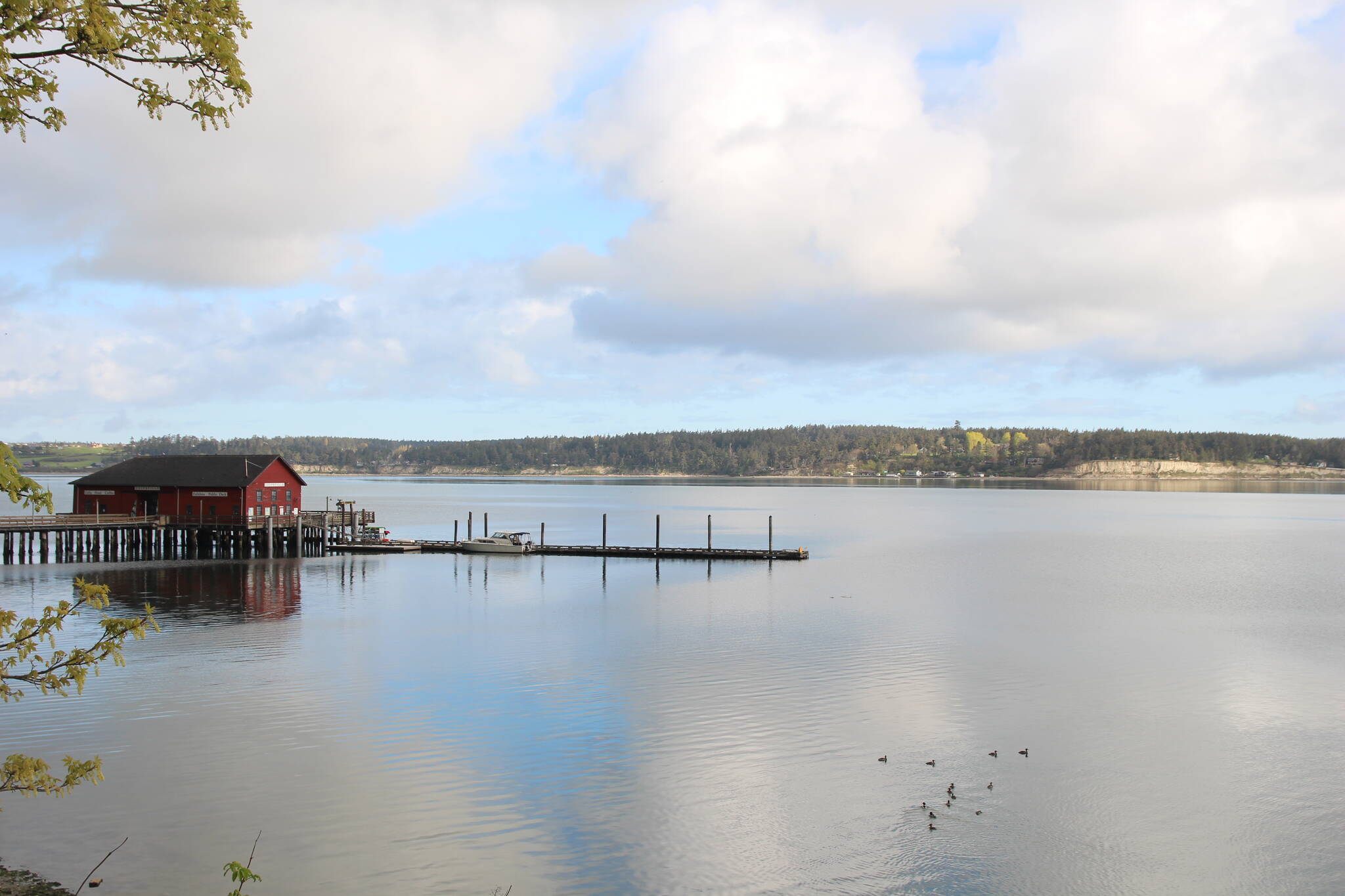The Town of Coupeville will soon begin to look at ways to reuse treated wastewater while continuing to identify solutions to reduce the amount of nutrients discharged into Puget Sound.
According to Public Works Director Joe Grogan, water is the most important resource on Whidbey Island, and its availability is increasingly at risk due to climate change and a growing population.
“Water will be more valuable to the entire community,” Grogan said. “Instead of discharging it into the Puget Sound, is there a more beneficial use?”
In January, the town received a $220,000 grant from the Washington Department of Health to conduct a reclaimed water feasibility study. Water reclamation, according to the Environmental Protection Agency, reuses water for a variety of beneficial purposes, like agriculture and irrigation or environmental restoration.
Washington approves the reuse of reclaimed water as long as its use and distribution is granted a state-issued reclaimed water permit, according to the agency.
Currently, the town is working on a request for proposal for the study that Grogan expects will be ready by the end of the month. After that, the town will hire a consultant that will conduct the study between July 2024 and December 2026 at the latest, he said.
The completed study will then be submitted to the Department of Ecology and the Environmental Protection Agency, which will also oversee the project, Grogan said.
The wastewater effluent, which is treated at the Coupeville Wastewater Treatment Plant and meets EPA standards, won’t be potable, Grogan said, but could potentially increase farming yields in Coupeville. To achieve this, the study might look into a variety of ideas.
One of them would involve pumping wastewater into a brackish, 500-foot-deep aquifer by using an abandoned well. According to information provided by Grogan, several wells used for agricultural purposes pump water from this aquifer.
Farmers could also connect their pipes to the effluent pipe near the well, allowing them to extract water before it goes down into the aquifer. This way, the water wouldn’t need to be re-pumped back to the surface.
To save on costs and time, the consultant might recommend using two old pipes — a force main pipe and a drainage pipe — that were abandoned after the old sewage treatment plant burned down, and a well that was abandoned for domestic water use due to saltwater intrusion.
Grogan said there is a possibility that the solutions, while technically feasible, might exceed the funds available, which happened with the study from 2010. Yet, he believes there is a smaller risk of this scenario repeating itself, and if necessary, the town could increase the rate for sewage treatment.
Simultaneously, the town will continue to identify ways to optimize nutrient removal from the wastewater while implementing the solutions already identified in the Nitrogen Optimization Plan, a document released in 2023. This project complements the town’s water reuse efforts.
In May 2023, Ecology granted the town a grant of $170,000 to conduct this study, according to Grogan.
While nitrogen supports the growth and survival of every organism, an excess of this gas in marine environments can cause toxic algae blooms that deplete the water of oxygen, leading to mass mortalities and the creation of dead zones.
Synthetic fertilizers, fossil fuels and the discharge of wastewater are at the source of this issue, which is one of the leading drivers of biodiversity decline, according to the EPA.
In 2022, Ecology issued the Puget Sound Nutrient General Permit, which aims to keep nutrients from all of the 58 wastewater treatment plants discharging into Puget Sound at current levels. To maximize the removal of total inorganic nitrogen from the wastewater, treatment plants are required to develop and implement their own nitrogen optimization plans, according to the plan’s text.
The Coupeville plant, which is an “oxidation ditch facility,” had already been addressing this issue. One of these efforts consisted of adjusting the water level in the plant’s oxidation ditches to reduce the submergence of the brush rotors, which reduced oxygen transfer — or the rate at which oxygen is transferred from the air to a liquid, according to the National Institutes of Health.
Furthermore, the facility began implementing only one brush at all times, while keeping a second brush running for five minutes every hour.
According to the plan, this strategy proved successful as it cut total inorganic nitrogen from the effluent almost by half.
Another method that could be implemented would consist of monitoring nitrogen by using, for example, ultraviolet light absorption — a method used to measure levels of nitrates, like nitrogen, in the water — or wet chemistry — which according to various sources is the analysis of chemicals in their liquid form.



